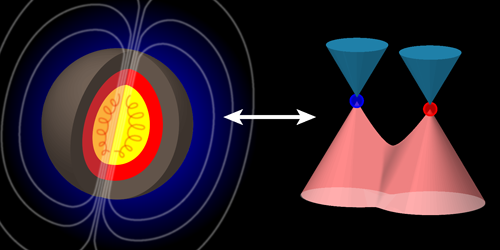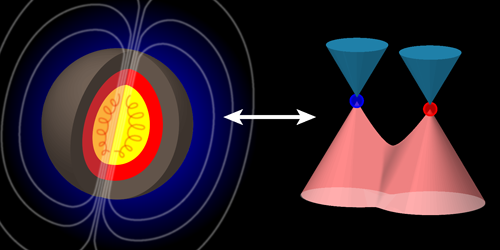Weyl Metals as Proxies for Astrophysical Dynamos
Planets and stars can create magnetic fields that persist for billions of years. These fields, according to dynamo theory, arise from electric currents created by the movements of viscous, electrically conducting fluids in the outer core of the star or planet. This theory, however, cannot fully explain astrophysical observations, so researchers have been testing it in controlled laboratory experiments. Now, Victor Galitski at the University of Maryland, College Park, and colleagues propose that the dynamo effect could be observed in a recently discovered class of topological materials known as Weyl metals—solids in which electronic excitations behave as massless fermions. These materials could provide an experimental platform that is simpler than previous lab setups and could be tuned to mimic astrophysical conditions.
Galitski and colleagues study charge transport in a Weyl metal, showing that it can exhibit effects, such as turbulence, that are encountered in weakly viscous fluids. They find that charge motion in the material is governed by the same equations that underlie dynamo theory: the Navier-Stokes equations for viscous fluids coupled to the Maxwell equations for electromagnetism. The team finds the conditions under which a dynamo effect can arise in a Weyl metal by calculating a crucial figure of merit for dynamos: the magnetic Reynolds number, a parameter that quantifies whether the magnetic field configuration is determined by bulk movement or by diffusion. The result shows that this number can be large enough to generate a dynamo-induced field that could be detected in experiments.
This research is published in Physical Review Letters.
–Matteo Rini
Matteo Rini is the Deputy Editor of Physics.





